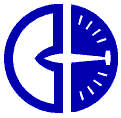
CAMBRIDGE AERO INSTRUMENTS, INC.
Warren-Sugarbush Airport
Rural Route Box 109-3
Warren, Vermont 05674 U.S.A.
Phone: 802-496-7755, FAX: 802-496-6235
Email: cai@cerfnet.com

Create a new temporary directory and download the self-extracting archive file caipc311.exe into this directory. Run this file using the Windows File Manager. When the program has finished, refresh the Windows file manager display, by using the F5 key.
You should now see files from the Cambridge Aero Instrument distribution disk, including a file named install.exe. Still using the Windows File Manager, run this file. The CAI installation software will ask you a number of questions. Answer them using the suggested defaults. Your new (or upgraded) Cambridge software is now ready to run. (If you do not use the defaults, it will not be possible to access flight logs directly from your WWW client.)
Note:
The Cambridge INSTALL program will automatically upgrade existing
Cambridge software, databases, and flight logs. If you do not want this
to happen, it is suggested that you rename the directory containing
your old Cambridge software prior to installation.
Viewing Flight Logs from a PC WWW Client
Assuming you have installed the Cambridge software, you may view
GPS flight logs by following hypertext links, for example
Ray Lynskey's Day 1 flight
from the 1995 World Gliding Championships in New Zealand.
Press Esc to return to your WWW client.
The first time you follow a hypertext link to a GPS flight log, you will get an automatic request to configure a helper application for the type application/x-cai-dollar. In response to this request you should specify to launch the Application C:\CAI\FSELWWW.BAT. You should also specify that this application is associated with the file extension .CAI.
Note: Automatic configuration of helper applications is a feature of most newer WWW client programs, such as Netscape. Older WWW clients are more difficult to configure.
Once you have done this you will be able to access any of the flight logs from the World Gliding Championships in New Zealand, 1995 by following the hypertext links. To get started quickly, use the up-arrow, down-arrow, left-arrow, right-arrow, Enter and ESC keys to move about. Use + and - for zoom control. The function key F1 often invokes context dependent help.
The S key enables single step mode. In this mode, the space bar and number keys step the plot and the + and - keys control the direction. Tab key and Shift-Tab can be used to prune a portion of a flight log. The T key evaluates turnpoints.
After you have installed the Cambridge software, you will have a local copy of the on-line documentation.
You may want to suspend viewing a flight log to run other Windows
applications. For example, you may want to disconnect a dial-up Internet
connection. You may suspend the Cambridge flight log software
by holding down the Alt key and repeatedly pressing
the Tab key until the desired application is selected. If
you then release both keys the Cambridge software will be minimized and
will appear as an MSDOS icon. To resume viewing the flight log, maximize
this icon.
Downloading and Viewing Multiple Flight Logs
The Cambridge Aero software includes additional features which can
not be invoked directly from a WWW client. These include the ability to
control plotting modes and the ability to view several competing
gliders simultaneously. To use these features, first down load
the interesting file(s) to your PC and then run the Cambridge software.
In more detail:
Converting Flight Logs to the IGC Standard Format
The Cambridge GPS recorders used in
The 1995 World Gliding Championships
created flight logs in a proprietary format. The
Cambridge PC software can convert flight logs into the
new IGC standard format. After downloading the
desired flights, launch the Cambridge software from
an MSDOS Window and invoke
MANAGE THE FLIGHT LOG DATABASE from the main menu.
The IGC standard format is a text file, suitable for processing by most computer applications.